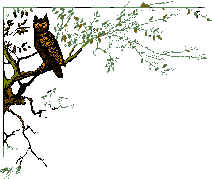British Regulations Relating to Woodlands

A number of regulations apply to woodlands and their management which owners/managers need to be aware of. Ignorance of certain requirements may result in prosecution. Regulations can change fairly frequently. It is a good idea to check the relevant sources directly.
Forestry Commission website FC Felling Licences FC Booklet on Felling Regulations
| Tree Preservation Orders | Conservation Areas | Timber Movement | |
| . Felling Licences Anyone wishing to fell trees in Britain may need permission from the Forestry Commission (FC). The FC deal with applications for felling licences at local FC Conservancy Offices. The process of applying for a licence will take at least ten weeks. |
|
||
| Everyone involved in felling
trees, whether actually doing the work or engaging others to do it, must ensure that a
licence has been issued prior to starting, unless one of the exceptions applies. This
includes owners, contractors and subcontractors. If the tree(s) concerned are covered by a
Tree Preservation Order or are in a Conservation Area, then permission may also be needed
from other organizations for any proposed felling. This can apply even if you do not need
a felling licence. Failure to have the correct licence may result in the prosecution of anyone involved in the unauthorized felling. A licence carries an expiry date after which felling must cease, even if all the agreed felling has not yet been accomplished. A new licence then has to be applied for. If in any doubt about the need for permission or a licence, enquire at your local FC office. List of FC offices |
|||
| These exemptions
applied as of October 2002. Check the FC website for any subsequent changes to the
regulations which may have occurred.
Felling that does not require permission: In any calendar quarter (1st January - 31st March, 1st April - 30th June, 1st July - 30th September, 1st October - 31st December) 5 cubic metres can be felled without a licence, provided no more than 2 cubic metres are sold. The following are also currently exempt from the need for licences:
|
|||
|
Tree Preservation Orders (TPO's) are made by local planning authorities (usually the local council) to protect valued individual trees or areas of woodland. The presence of a TPO covering a site prevents the felling, lopping, topping or uprooting of trees in the area without permission from the planning authority.
|
|||
| Conservation Areas
Before felling, lopping, topping or uprooting any tree within a Conservation Area, permission must be sought from the local authority. Unless one of the exceptions applies, you will in any case need to apply for a felling licence from the Forestry commission. Failure to declare knowledge of the presence of TPO's or Conservation Area status in an application which results in a licence being issued, renders the licence invalid. You will commit an offence by cutting down the trees concerned. Tree felling that will affect Sites of Special Scientific Interest (SSSI's) will either need to be agreed with English Nature, Scottish Natural Heritage, or the Countryside Council for Wales, depending on tree location. |
|||
|
Restrictions on the movement of timber are imposed by the Forestry Commission in order to control the spread of pests and diseases. Check with your local FC Plant Health Officer. List of FC offices |
|||
Woodland Management Contents


